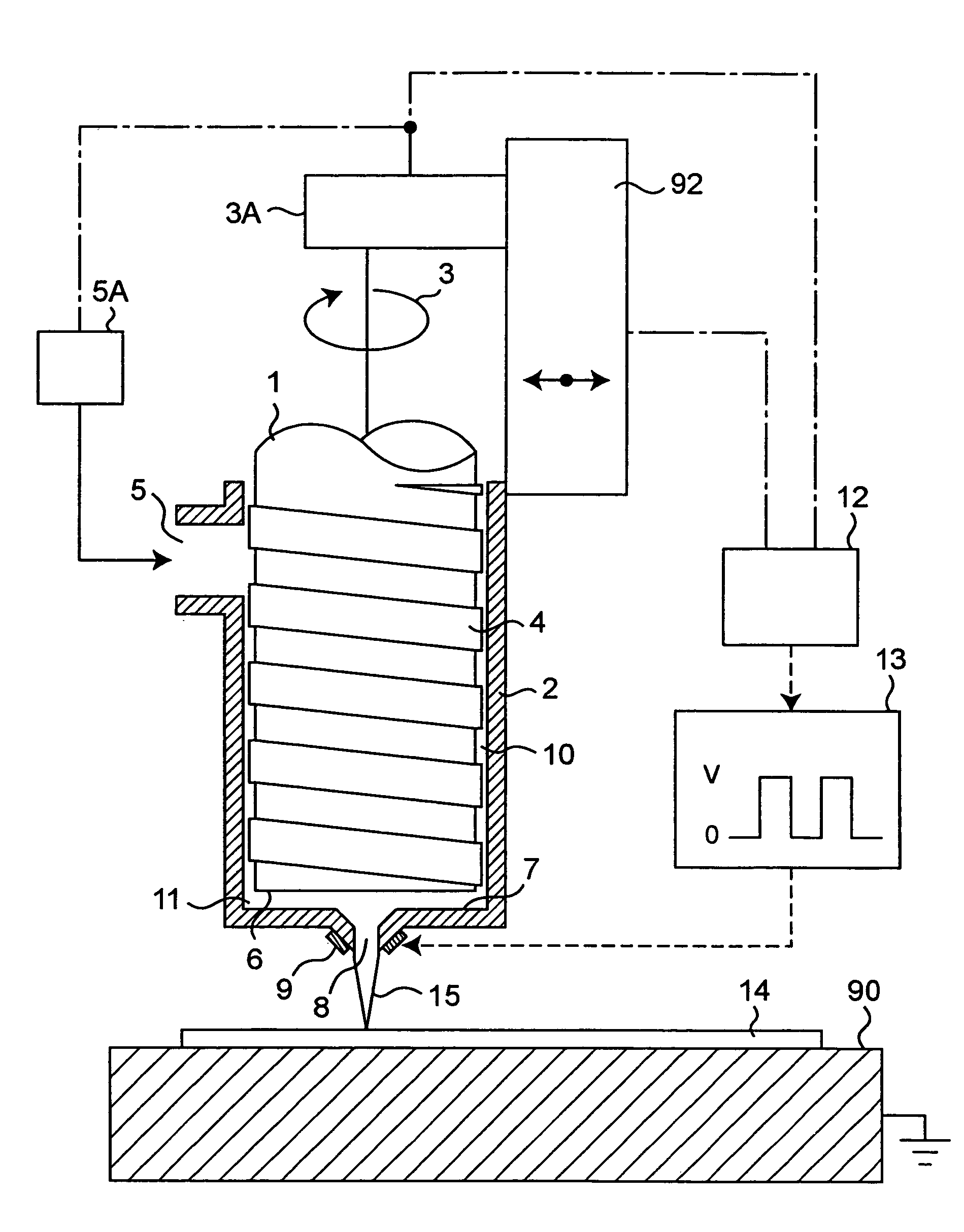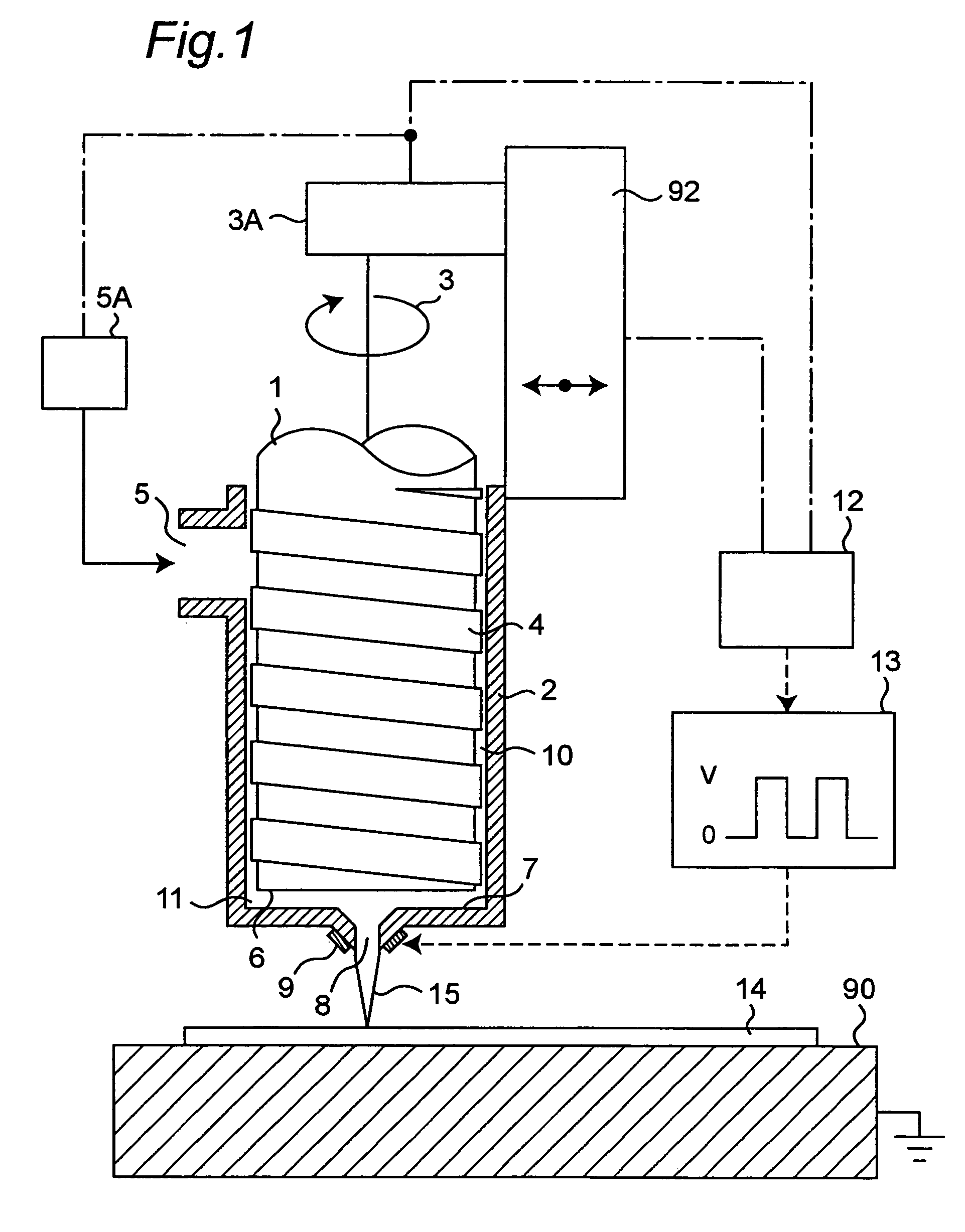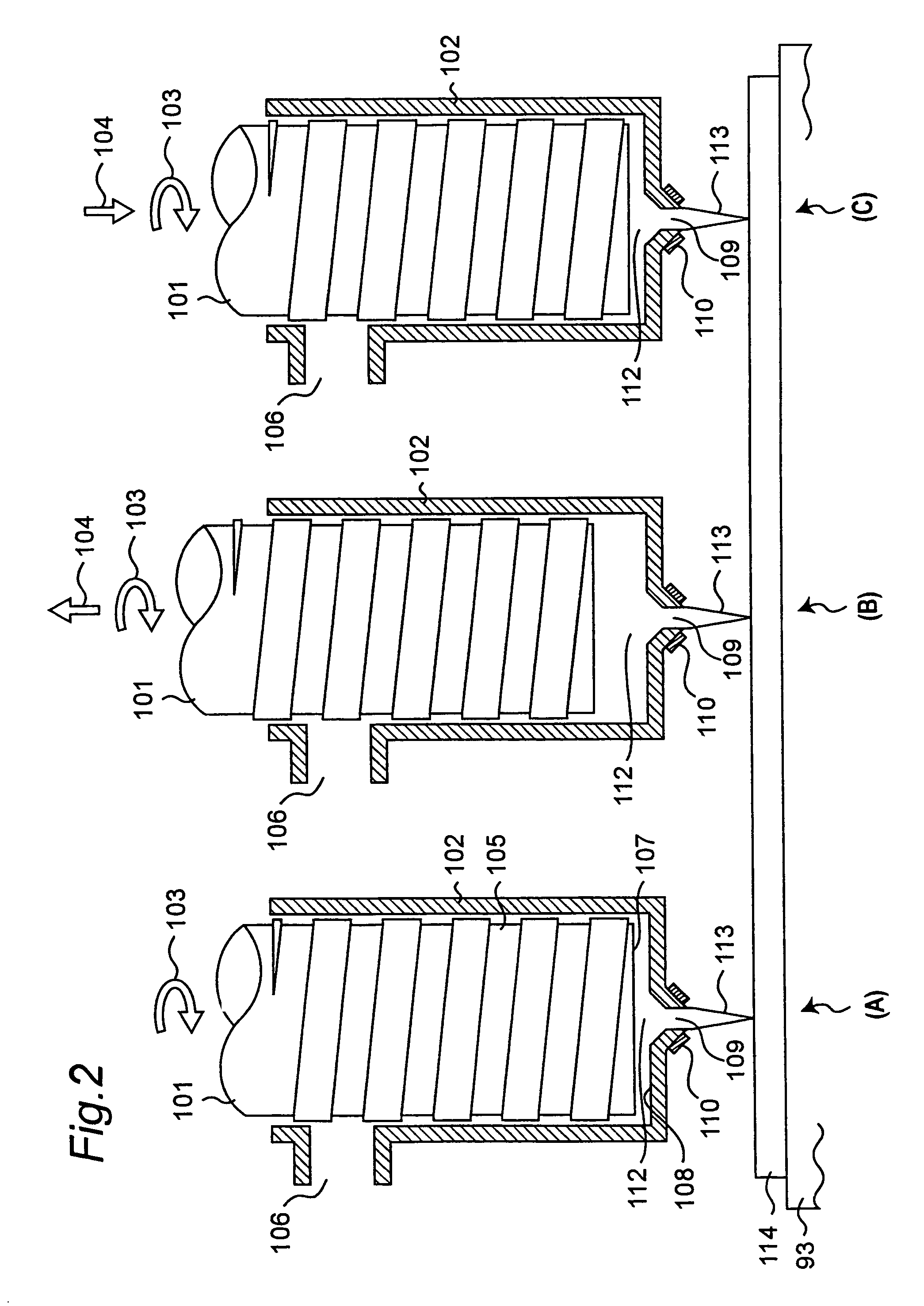Fluid applying apparatus
a technology of fluid application apparatus and nozzle, which is applied in the manufacture of electrode systems, discharge tube coatings, instruments, etc., can solve the problems of increased manufacturing costs, difficult to obtain constant filling amount over the entire front/back-face plate, and large-scale screen printing plate. achieve the effect of reducing the fluid pressure of the pump chamber
- Summary
- Abstract
- Description
- Claims
- Application Information
AI Technical Summary
Benefits of technology
Problems solved by technology
Method used
Image
Examples
first embodiment
[0102]FIG. 1 is a partial cross-sectional schematic view for explaining a fluid applying apparatus capable of embodying a fluid applying method according to a first embodiment of the present invention.
[0103]Reference numeral 1 denotes a piston, and 2 denotes a housing for housing this piston 1 therein. In the case where the applying material can be treated as a nonconductive one, the housing 2 may be made of either an insulative material or a conductive material. When a conductive material is used for the whole housing 2, the nozzle tip end, which is the closest to the substrate, is the highest in electric field strength, so that the function of electric field control has no obstacles. However, when it is not desirable to apply high voltage to the whole housing 2 in terms of safety, a concrete example is shown in FIG. 29, it is appropriate to use an insulative material only for a discharge portion (364 in FIG. 29) where the electrode is to be provided, and to use a conductive materi...
third embodiment
[0125]FIGS. 4A and 4B are partly cross-sectional schematic views for explaining a fluid applying apparatus capable of carrying out a fluid applying method according to a third embodiment of the present invention, showing a case where a thrust dynamic seal is used as another example of the device for generating the suction force f2 of tending to return to the interior of the discharge nozzle. The piston shaft of a dispenser used in the fluid applying apparatus and method according to this third embodiment, like the fluid applying apparatus and method according to the second embodiment, is so structured that the piston shaft is enabled to make rectilinear motion simultaneously with rotational motion by a two-degree-of-freedom actuator (more specifically, rotation transmission device 603A and axial-direction movement device 604A). A thrust dynamic seal is formed between a discharge-side end face of the piston shaft and its opposing surface.
[0126]Reference numeral 601 denotes a piston h...
fourth embodiment
[0129]FIG. 5A is a partly cross-sectional schematic view showing a fluid applying apparatus capable of carrying out a fluid applying method according to a fourth embodiment of the present invention, showing a case where a counter electrode (hereinafter, referred to as space electrode) is placed in a space between the discharge nozzle and the substrate without making use of the substrate as a counter electrode. That is, a voltage is applied to between the housing-side electrode, which is placed in part or entirety of the housing (dispenser), and the space electrode, by which an electric field is formed. With this constitution, there is no need for forming a conductive film on the substrate side or placing a conductive-substance plate material or the like under the substrate, so that restrictions on application objects can be eliminated. This produces an advantage for drawing ultrafine lines even in the case of, for example, a thick substrate because a large electric field strength ca...
PUM
| Property | Measurement | Unit |
|---|---|---|
| diameter | aaaaa | aaaaa |
| viscosity | aaaaa | aaaaa |
| diameter | aaaaa | aaaaa |
Abstract
Description
Claims
Application Information
 Login to View More
Login to View More - R&D
- Intellectual Property
- Life Sciences
- Materials
- Tech Scout
- Unparalleled Data Quality
- Higher Quality Content
- 60% Fewer Hallucinations
Browse by: Latest US Patents, China's latest patents, Technical Efficacy Thesaurus, Application Domain, Technology Topic, Popular Technical Reports.
© 2025 PatSnap. All rights reserved.Legal|Privacy policy|Modern Slavery Act Transparency Statement|Sitemap|About US| Contact US: help@patsnap.com



